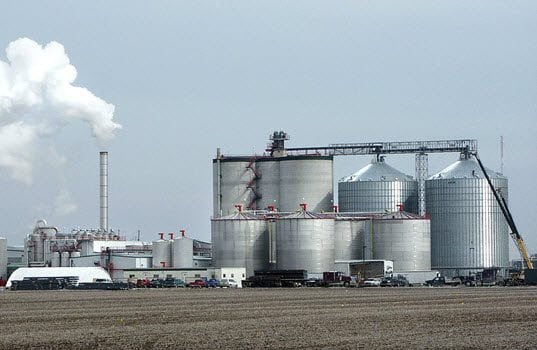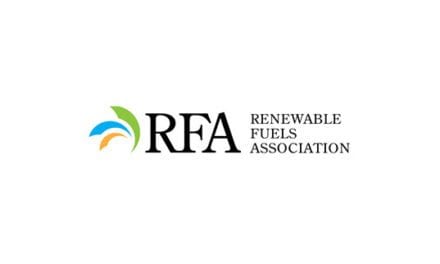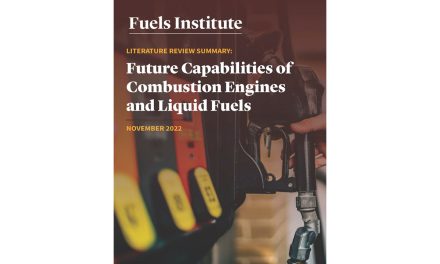The production of cellulosic biofuels remains well below the statutory levels, and the cellulosic industry is unlikely to achieve significant commercial production volumes in the foreseeable future. Congress recognized that its cellulosic volume targets were aspirational, and included a reality check – a waiver provision requiring EPA to lower requirements to the projected volume available, and to offer waiver credits as a consumer-protection mechanism. Consistent with judicial direction,’ large cellulosic biofuel waivers will continue to be necessary to ensure refiners are not mandated to purchase fuels that simply do not exist.
In conclusion, Congress provided the authority to adjust the statutory volume standards when implementation of the RFS would severely harm the environment, the economy, or result in an inadequate domestic supply. EPA must recognize that exceeding the ethanol blendwall could restrict the availability of domestic transportation fuels. It is appropriate and necessary for EPA to utilize the waiver authority to protect consumers and the U.S. economy. The RFS is fundamentally flawed and imposes economic costs without environmental benefit. We will continue to advocate for Congress to repeal or significantly reform the RFS. Until legislative changes occur, we urge you to acknowledge these issues in the upcoming rulemakings and maintain a common sense approach to implementing the RFS.
Ethanol Rebuttal Letter
May 7, 2015
The Honorable Gina McCarthy
Administrator
U.S. Environmental Protection Agency
1200 Pennsylvania Ave. NW
Washington, DC 20460
On behalf of a growing and diverse biofuels industry, we are writing to respond to a letter dated May 1, 2015 and addressed to you by the American Petroleum Institute (API) and American Fuel & Petrochemical Manufacturers (AFPM). Despite the legal maladies and mischaracterizations in the API/AFPM letter, it effectively highlights the choice before you: you must either choose to reward the oil industry for refusing to fulfill its obligations under the law, or choose to get the Renewable Fuel Standard (RFS) back on track by proposing Renewable Volume Obligation (RVO) levels that comport with the spirit and intent of the law.
At its core, the API/AFPM letter confirms that the erroneous methodology initially used by EPA to set its proposed 2014 RVOs caters to the whims of the oil industry. Not surprisingly, the API/AFPM letter voices support for that flawed methodology, and encourages the Agency to retain its proposed approach for establishing RVOs in 2014, and to extend the same flawed approach to establish RVOs in 2015 and later years.
The methodology used by EPA for its 2014 RVO proposal ultimately rewards the intransigence of oil refiners toward investing in renewable fuels infrastructure, protects their market share, and thus prevents increasing volumes of cleaner and more sustainable renewable fuels from entering the marketplace. Adopting the same methodology for RVOs in 2015 and beyond would continue to reward oil companies for their stubborn refusal to follow the spirit and intent of the expanded RFS adopted by Congress as part of the 2007 Energy Independence and Security Act (EISA).
While API/AFPM refer to EPA’s initial 2014 RVO methodology as a “reasonable approach,” they conveniently overlook its obvious legal infirmities. Section 211(o)(7)(A) of the Clean Air Act clearly specifies the circumstances under which EPA may consider waiving annual renewable fuel blending requirements. In order to grant a waiver, EPA must determine that “…implementation of the requirement would severely harm the economy or environment of a State, a region, or the United States,” or determine that “…there is an inadequate domestic supply” of renewable fuel to meet required blending levels.
Clearly, the terms “inadequate domestic supply” refer to a shortfall in the amount of physical renewable fuel and available RIN credits that would be needed to meet RFS volumetric requirements.2 However, API and AFPM inappropriately attempt to apply the terms “inadequate domestic supply” to purported constraints on the ability to distribute required volumes.
The supposed lack of infrastructure to distribute larger volumes of ethanol above and beyond the “blend wall” is not a circumstance that EPA may take into consideration when evaluating whether a waiver is justified. In fact, the escalating volume requirements of the RFS were meant to drive investment in the installation of new infrastructure that will enable larger quantities of renewable fuels to be distributed to consumers.
If EPA were to waive the RFS requirements based on the notion that the necessary infrastructure to distribute larger volumes of renewable fuel “doesn’t exist,” the Agency would eliminate the incentive created by the policy to expand renewable fuels distribution capabilities. In this way, the API/AFPM argument that RFS requirements beyond the “blend wall” are unachievable would become a self-fulfilling prophecy.
Beyond the legal maladies associated with the oil industry’s suggested RVO methodology, the API/AFPM letter incorrectly characterizes the capabilities of existing automobiles and refueling infrastructure to consume levels of ethanol above the so-called “blend wall.” The letter falsely states that “the gasoline supply is currently saturated with the maximum amount of ethanol that can safely be blended without posing risks to the vehicle fleet, refueling infrastructure and vehicle warranties.” In truth, based on EPA vehicle approvals and expected gasoline consumption, the existing U.S. automotive fleet has the capacity to legally and safely consume nearly 27 billion gallons of ethanol.
The current U.S. automotive fleet contains more than 17.4 million flex-fuel vehicles capable of running on blends containing up to 85% ethanol (E85). If all existing FFVs refueled with E85 even 25% of the time, they would consume an estimated 2.2 billion gallons of ethanol above the purported 10% “blend wall,” placing total ethanol consumption at or above the statutory requirement for 15 billion gallons of undifferentiated renewable fuel in 2015.
Moreover, contrary to API/AFPM’s contention that “vehicle manufacturers do not recommend [E15] use in most vehicles on the road,” we estimate that some 41 million light-duty vehicles on the road are explicitly approved by the manufacturers for E15 use (see attachment).5 This is roughly double the amount of vehicles for which manufacturers require the use of premium gasoline. Moreover, API/AFPM failed to note that the makes and models approved by manufacturers for E15 use are among the top-selling vehicles in the United States. Indeed, we estimate that approximately 70% of new vehicles sold in 2015 will carry explicit approval from the manufacturer for the use of E15. Taken together, over 85% of all automobiles are legally allowed to use E15.
The RFS program was designed to force the oil industry to change the status quo-not to perpetuate it. The entire purpose of this program would be subverted if the oil industry is rewarded for its failure to take the steps necessary-steps it has known about since 2007-to ensure that it is capable of distributing, blending, and dispensing the renewable fuel volumes required under the statute. We believe EPA faces a critically important choice with its expected upcoming 2014-2016 RVO proposals: get the RFS back on track by proposing RVOs that comport with statutory requirements and EPA’s legal waiver authority, or further reward the oil industry by embracing its preferred “blend wall” methodology as outlined in the API/AFPM letter. We implore you to choose wisely.
Sincerely,
Abengoa Bioenergy, AEM, Novozymes, Renewable Fuels Association, American Coalition for Ethanol, Biotechnology Industry Organization, National Corn Growers Association, Advanced Ethanol Council, Growth Energy and Poet.









